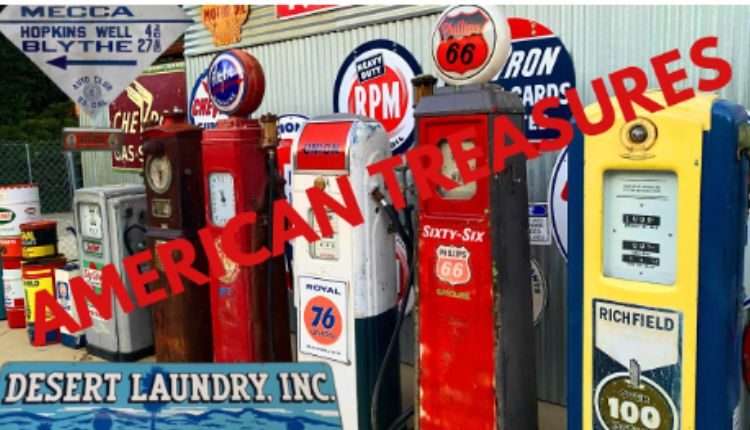
Vintage Charm
In an era dominated by digital technology and sleek modern designs, vintage gas pumps stand as nostalgic relics of a bygone era, embodying a unique blend of artistry and functionality. For collectors and enthusiasts alike, these charming pieces not only evoke memories of road trips and classic cars but also serve as a testament to the evolution of automotive culture. From the intricate details of a 1930s Wayne pump to the vibrant colors of a 1950s Gilbarco, each vintage gas pump tells a story steeped in history and craftsmanship.
This guide aims to navigate the fascinating world of old gas pumps, offering insights into their design, mechanics, and the factors that contribute to their value in today’s collector market. Whether you’re a seasoned collector seeking to expand your assortment or a newcomer eager to appreciate the allure of vintage Americana, understanding the nuances of these artifacts can greatly enhance your collecting journey. Join us as we explore the charm, history, and practicalities of collecting old gas pumps, equipping you with the knowledge needed to find and care for these timeless treasures.
– Understanding the history of gas pumps
The evolution of gas pumps is a fascinating journey that reflects broader technological advancements and changes in consumer behavior. The first gas pumps, introduced in the late 19th century, were rudimentary devices designed primarily for kerosene, as automobile fuel was not yet in widespread use. These early pumps often featured gravity-fed mechanisms and were manually operated, requiring significant physical effort from the attendant. As the automobile industry boomed in the early 20th century, so did the demand for more efficient fueling solutions, leading to the development of mechanical pumps that could dispense gasoline more easily and accurately.
Throughout the decades, gas pumps underwent significant design transformations, influenced by both aesthetics and functionality. The 1920s and 1930s saw the rise of iconic designs, which emphasized branding and visual appeal, with colorful globes and elaborate metalwork that attracted attention at gas stations. Post-World War II innovations brought about electric pumps and self-service stations, changing the landscape of the fueling experience. Today, modern pumps incorporate advanced technology for secure transactions and enhanced customer convenience, but vintage gas pumps continue to evoke nostalgia and serve as a reminder of the rich history of automotive culture and the evolution of consumer services.
– Key features that enhance collectibility
Several distinctive features contribute to the collectibility of vintage gas pumps, elevating them from mere functional devices to coveted collectibles. First, the rarity and historical significance of specific models play a crucial role; limited production runs or those associated with landmark events can command higher prices among collectors. Additionally, the original paint and decals significantly enhance value, as these elements reflect the pump’s authenticity and aesthetic appeal. Collectors often seek models that have retained their original finishes, which can evoke nostalgia and showcase the craftsmanship of their era.
Another key aspect is the variety of designs and brands that exist within the market, as collectors may focus on specific themes, such as regional brands, unique manufacturing techniques, or promotional editions. The condition of the pump is also paramount; fully restored units tend to be more desirable but may also draw interest in their original, unrestored state for those who appreciate the patina of age. Ultimately, a combination of rarity, aesthetic design, and the narrative surrounding each gas pump contributes to its collectibility, making these vintage artifacts both a reflection of history and a testament to the changing landscape of American consumer culture.
– Tips for maintaining vintage gas pumps
To preserve the integrity and aesthetic appeal of vintage gas pumps, regular maintenance is essential. Start by cleaning the exterior with a mild soap solution to remove dirt and grime, which can otherwise lead to corrosion over time. It’s advisable to avoid harsh chemicals that could damage the original paint and decals. Inspecting the structure for rust or other forms of deterioration should be a routine practice; any signs of wear should be addressed promptly to prevent further damage. Applying a suitable rust-inhibiting primer and a quality sealant can help safeguard against environmental factors.
Additionally, maintaining the mechanical components is vital for both functionality and authenticity. Ensure that all moving parts are lubricated and operational, as this can enhance the pump’s longevity. If the pump includes glass components, such as sight glasses or globes, it is crucial to handle these with care during maintenance. When making any repairs or restorations, it is recommended to source original or period-appropriate parts to maintain historical accuracy and value. By attending to both aesthetic and mechanical aspects, collectors can ensure their vintage gas pumps remain a testament to a bygone era while preserving their charm for future generations.
In conclusion, the allure of old gas pumps extends far beyond their functional origins, embodying a rich tapestry of automotive history and nostalgia. As collectors seek to preserve these vintage relics, they not only acquire unique pieces of Americana but also contribute to the appreciation of an era marked by innovation and style. Whether displayed in a personal collection or restored for a vintage gas station project, these pumps serve as captivating conversation starters and testaments to the craftsmanship of the past. For enthusiasts and collectors alike, the journey of curating a collection of old gas pumps is not just about ownership; it is about celebrating the charm and character that these artifacts bring to our modern world.





